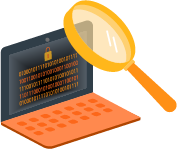What are the security risks for remote teams? Let’s join Sean Dawson, Director of IT, and explore this question and the solutions to these risks.
One of the biggest risks that you have is the actual access. One issue to take into consider is: are you dealing with a B.Y.O.D. culture, which stands for “Bring Your Own Device” or are you dealing with machines that are issued to the users?
If you are on B.Y.O.D., you have to consider if you want the users accessing your corporate network from their computer. There are ways to address this though. You can go with something like an AWS, or “Amazon Web Services,” Desktop As A Service, or “DAAS” or you could do something like remote control situation, where the user uses a remote control software tool to access their machine in your corporate network on their DAAS; so, they don’t need to actually carry anything with them.
You also have an issue as far as access with an expired or outdated web access. “Expired or outdated web access” relies heavily on your web filter. A web filter monitors what’s coming into your user’s web browser, which can be controlled from a remote control or a DAAS situation or even a VPN situation. That web filter prevents malware, viruses and a number of other bad things that can enter your machine. The problem is that it can be expired or outdated. So, you want to make sure that you have those tools and devices updated.
You also need to make sure that you are tracking your assets. Are the electronic devices of your remote team being tracked to know who has what? so, you don’t even really know who has what machine and what to protect.
Tracking assets is the ability to track who has what device, whether it’s a phone or a computer. You also have the ability commonly to be able to use a remote control software tool, if you should have the need to perform that on a device.
Addressing these risks with the solutions provided in the video will secure a safer virtual environment for your remote team.
If you are on B.Y.O.D., you have to consider if you want the users accessing your corporate network from their computer. There are ways to address this though. You can go with something like an AWS, or “Amazon Web Services,” Desktop As A Service, or “DAAS” or you could do something like remote control situation, where the user uses a remote control software tool to access their machine in your corporate network on their DAAS; so, they don’t need to actually carry anything with them.
You also have an issue as far as access with an expired or outdated web access. “Expired or outdated web access” relies heavily on your web filter. A web filter monitors what’s coming into your user’s web browser, which can be controlled from a remote control or a DAAS situation or even a VPN situation. That web filter prevents malware, viruses and a number of other bad things that can enter your machine. The problem is that it can be expired or outdated. So, you want to make sure that you have those tools and devices updated.
You also need to make sure that you are tracking your assets. Are the electronic devices of your remote team being tracked to know who has what? so, you don’t even really know who has what machine and what to protect.
Tracking assets is the ability to track who has what device, whether it’s a phone or a computer. You also have the ability commonly to be able to use a remote control software tool, if you should have the need to perform that on a device.
Addressing these risks with the solutions provided in the video will secure a safer virtual environment for your remote team.
Categories: Security, Office Hacks, DaaS, Network Security











